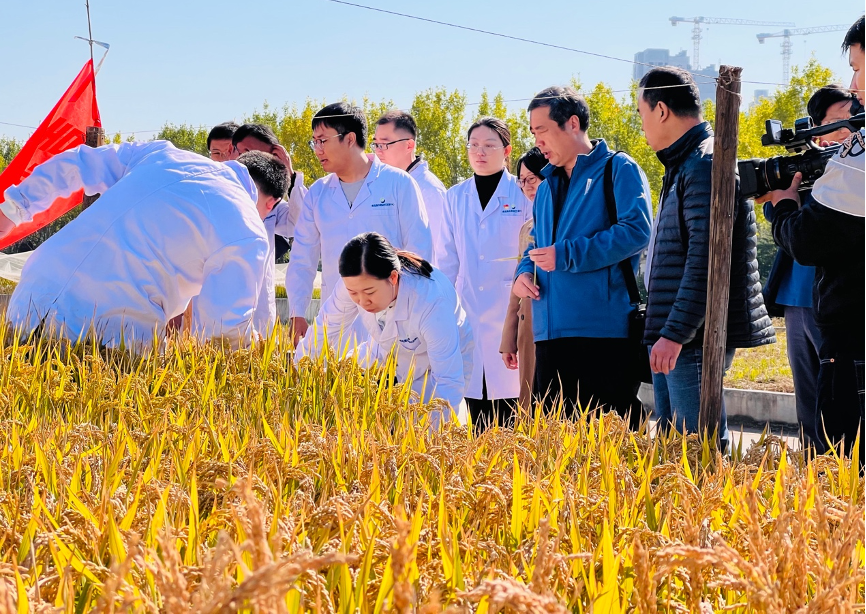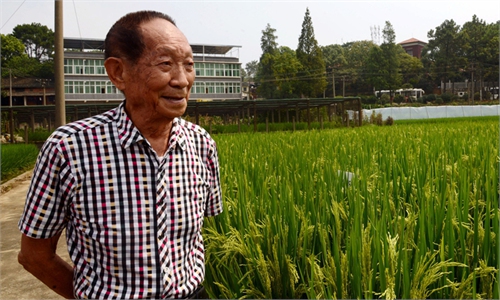
The Qingdao Saline-Alkali Tolerant Rice Research and Development Center organized experts to test output of saline-alkali tolerant rice on Tuesday. Photo: Courtesy of the Qingdao Saline-Alkali Tolerant Rice Research and Development Center
The output of salt-tolerant rice, better known as "seawater rice" initiated by China's "Father of Hybrid Rice" - the late Yuan Longping, reached a new high, with the average yield surpassing 691.8 kilograms per mu (0.06 hectares), a major breakthrough in China's efforts to boost rice output.
The Global Times learned from the Qingdao Saline-Alkali Tolerant Rice Research and Development Center that the Qingdao-based test field of the salt tolerant conventional rice variety, which survives under 0.4 percent sodium chloride (NaCl) for the whole growth period, yielded 691.8 kilograms per mu, exceeding its previous average output.
The test planting field was 0.034 percent in salinity, and its pH value was 7.9. The tested rice and the control varieties were irrigated with 0.4 percent salt water during their whole growth period.
Two tested plots yielded 608.9 kilograms per mu and 691.8 kilograms per mu, the center said.
Wan Jili, director of the technology research and development department of the center, told the Global Times on Thursday that reaching 691.8 kilograms per mu is quite an achievement for salt tolerant conventional rice, and great potential lies ahead.
In 2017, a hybrid saline-alkali tolerant rice that was irrigated with 0.6 percent salt water yielded 620.95 kilograms per mu. Because the hybrid rice generally yields more than conventional rice, the fact that the newly tested salt tolerant conventional rice variety that survives under 0.4 percent NaCl can reach such high output is quite significant, Wan noted.
Developed by Yuan, the "seawater rice" is a major breakthrough in China's efforts to expand rice output. Yuan's goal was to improve 100 million mu of wasted soil by planting saline-alkali tolerant rice.
In recent years, the team continued to make breakthroughs in salt-tolerant rice output, with its yield in 2019 reaching 295.9 kilograms per mu.
In 2021 it rose to 590.6 kilograms per mu, and in 2022 the maximum yield reached 691.8 kilograms per mu.
In the past 10 years, China's saline-alkali tolerant rice has leaped forward to reach the current stage of large-scale plantations.
By the end of 2021, the planting area reached 600,000 mu, distributed in more than 10 provinces such as Northeast China's Heilongjiang Province, East China's Shandong, Jiangsu and Zhejiang provinces, Northwest China's Xinjiang region, and North China's Inner Mongolia region.
In 2022, China's saline-alkali tolerant rice planting area will exceed 1 million mu, according to the center.



